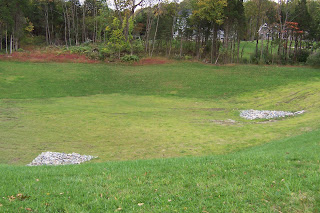Jack (Jak) Fruit (Artocarpus heterophyllus)

One of the many trees that were fruiting while we were at the Florida cottage was Jack Fruit, shown in the photo. A neighbor, who was there for her grandchildren’s birthday and lives in Florida, led me around the compound and helped identify many of the plants that had lost their labels. We were both happy to have made a new gardening friend. Some time later, I saw her walking along the driveway that led to her cottage, opposite ours. Whatever she was carrying was very large, very heavy, and very orange. Within minutes, she re-emerged from the cottage and was headed our way. The manager had picked a ripe Jack Fruit for her and cut it open, so that we could eat it. It is just as strange on the inside as it looks on the outside. The color is that of a mango, and the flavor is like a combination of mango and banana, although some people describe it as having a pineapple taste. The interior consists of long, fibrous, edible strings that resemble a wide pasta noodle, such as fettuc...

